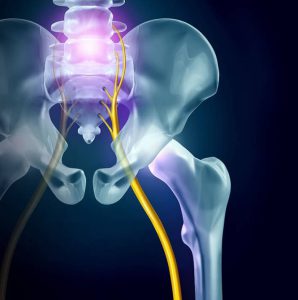
How Disc Degeneration Can Lead to Bulging Discs
Disc degeneration is a common condition, particularly in older adults, but it can also occur in younger individuals. This process involves the gradual deterioration of the intervertebral discs in the spine. These discs function as shock absorbers between the vertebrae, allowing for flexibility and cushioning in the spinal column. Understanding disc degeneration, its progression to conditions like bulging discs, and effective prevention strategies is essential for maintaining spinal health.
Understanding Disc Degeneration
The spine is composed of a series of bones called vertebrae, separated by intervertebral discs. These discs consist of a tough outer layer (annulus fibrosus) and a soft, gel-like center (nucleus pulposus). As individuals age, these discs gradually lose hydration and elasticity, leading to disc degeneration. This condition can be accelerated by factors such as injury, repetitive strain, poor posture, and certain lifestyle choices.
Initially, disc degeneration may not cause any symptoms. However, as the condition progresses, it can lead to the weakening of the disc structure. This weakening can result in a range of symptoms, including back or neck pain, stiffness, and decreased mobility. The pain often arises from nerve irritation or inflammation due to changes in the disc structure.
Progression to Bulging Discs
A common complication of disc degeneration is the development of bulging discs. As the discs degenerate, their loss of elasticity and height can cause the outer layer of the disc to bulge outward. This bulging differs from a herniated disc, where a crack in the outer layer allows some of the soft inner material to protrude. A bulging disc means the disc swells beyond its usual boundary, potentially putting pressure on spinal nerves.
The symptoms of a bulging disc depend on its location in the spine and whether it is pressing on nerve roots. For example, a bulging disc in the lower back can cause symptoms like pain that radiates down the leg, often referred to as sciatica.
Disc Degeneration Prevention Strategies
Preventing disc degeneration involves several key strategies:
- Maintain a Healthy Weight: Excess body weight increases strain on the spine, accelerating disc degeneration.
- Regular Exercise: Physical activity helps maintain spine flexibility and strength. Focus on low-impact exercises like walking or swimming, and avoid activities that strain the back.
- Proper Posture: Good posture, especially when sitting for extended periods, helps evenly distribute body weight and reduce spinal strain.
- Ergonomic Workspaces: An ergonomic workspace supports spinal health, including chairs with proper back support and computer screens at eye level.
- Avoid Smoking: Smoking impairs blood flow to the spine and can hasten degenerative changes.
- Healthy Diet: A diet rich in calcium and vitamin D supports bone health, crucial for a healthy spine.
- Avoid Repetitive Strain: Be mindful of activities that put repetitive strain on the spine and use proper lifting techniques.
Conclusion
Disc degeneration, a common condition often associated with aging, can lead to complications such as bulging discs. While some factors like aging are unavoidable, adopting lifestyle changes like maintaining a healthy weight, engaging in regular low-impact exercise, practicing proper posture, and following a nutritious diet can help slow the progression of disc degeneration and reduce the risk of associated conditions.
For those already experiencing symptoms, treatments like The Nerve & Disc Institute’s IntraDiscNutrosis® program provide a promising solution, focusing on restoring disc health and function. Managing disc degeneration effectively through both preventive measures and innovative treatments like IntraDiscNutrosis® is vital for maintaining overall spinal health and quality of life.